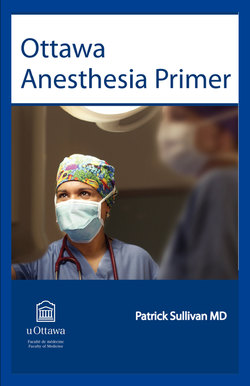Читать книгу Ottawa Anesthesia Primer - Patrick Sullivan - Страница 6
На сайте Литреса книга снята с продажи.
Chapter 1 Rotational Learning Objectives
ОглавлениеMarc Doré MD, Nikhil Rastogi MD, Patrick Sullivan MD
The learning objectives in the Ottawa Anesthesia Primer are designed principally for the anesthesia rotation and are to be tailored to meet the needs of the student. Listed in the knowledge and skills section below are seven traditional objectives designed for medical students during their anesthesia rotation. Students studying in other disciplines may choose to tailor their goals to a limited number of objectives for their rotation. In addition to the general objectives presented here, key learning objectives are listed for the student in each chapter.
Specific attitudes, knowledge and skills are key elements for a successful rotation in anesthesia. With this in mind, students are encouraged to identify their specific goals and objectives and to discuss these with their supervisor and instructors near the beginning of their anesthesia rotation.
Attitude:
We hope the time students spend with us will stimulate a thirst for knowledge and understanding of the fascinating physiology and pharmacology that occurs in the patient undergoing surgery. Anesthesia is a somewhat unnatural if not magical state, and it is normal for students to feel technically challenged during their rotation as they acquire vascular access and airway management skills. Each student can expect to experience (as all doctors have) a humbling but hopefully rewarding technical learning curve. They should remain attentive to their technical challenges and their response to them, as well as the response of their patients and other medical personnel as they meet these challenges. We ask students not to cloud their eyes and senses by technical monitors, but rather, to open their eyes and senses to the overall care of the patient. We expect students to commit to excellence in the care and concern they provide for the well being of the patients and their families. We also insist on punctuality and honesty as a basis of good medicine.
The Royal CanMEDS Physician Competency Framework was created by the Royal College of Physicians and Surgeons of Canada as a competency-based resource to guide students through their individual development as a medical expert in their chosen field. The CanMEDS framework identifies and describes six roles of the medical expert (Fig.1.1): Professional, Scholar, Communicator, Health Advocate, Collaborator, and Manager. Students are encouraged to conduct themselves professionally, to become involved and collaborate with the anesthesia surgical team, to communicate effectively with patients and the surgical team, and to advocate on behalf of the patient. Students should strive to develop a scholarly understanding of the subject matter by reading the required material and by asking questions during their anesthesia rotation. Above all, we must always remember that our primary goal is to provide safe and compassionate care for the patient.
While students may view anesthesia as a specialty with limited patient contact, they should ensure that opportunities for communication with the patient and family do not pass by. Fact gathering encounters do not have to be devoid of reassurance, kindness, or a comforting touch. We expect both positive and negative experiences during the anesthesia rotation to be discussed openly with us to ensure the best possible rotation for both current and future students.
Fig. 1.1 The six roles of the medical expert as identified by the CanMEDS Physician Competency Framework.
General Objectives
Knowledge and Skills:
1 To demonstrate an understanding of the anesthetic considerations for a variety of medical conditions and perform the appropriate preoperative assessment and preparation of the patient.
2 To acquire the knowledge necessary to conduct appropriate fluid and blood component therapy.
3 To recognize and describe the main drug classes frequently used in the perioperative period.
4 To acquire knowledge for the safe provision of local anesthesia appropriate for general medical care.
5 To review and describe the principles of acute pain management.
6 To acquire basic skills in airway management.
7 To participate in an emergency resuscitation and, in so doing, to recognize the various roles that health care professionals play in such situations, as assessed by the student’s preceptor during a real or simulated emergency.
